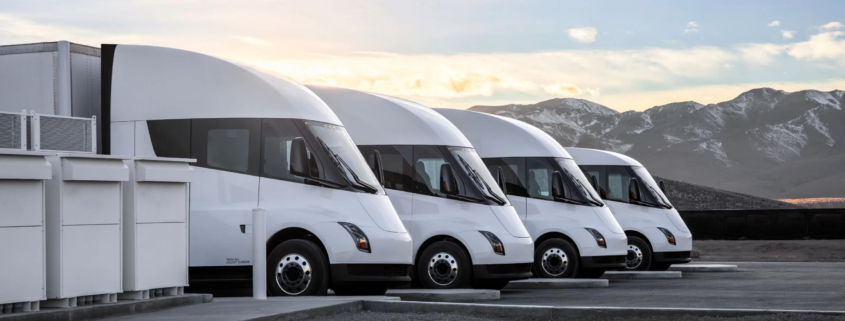Electric Vehicles Present New Insurance Challenges
Electric vehicles (EVs) continue to gain traction in the U.S. auto market. Last year, Americans bought nearly 450,000 EVs—an 83% jump over 2020. With many federal and state governments pushing for lower CO2 roadway emissions, EV demand is expected to soar during the next decade.
This has commercial fleet owners wondering what a world without gas- and diesel-powered vehicles might look like, particularly when it comes to the potential exposures EVs could create. This article discusses the risks that could impact insurance costs for EV fleets.
Unique EV Risks
Because EVs tend to cost more than standard automobiles, their insurance rates are usually higher. However, other factors unique to EVs could also make insuring them costlier. Such factors include:
- Cyberthreats—Like most new cars and trucks, EVs offer connected car technologies such as Wi-Fi, data sharing and semi-autonomous systems that leave them vulnerable to cyberthreats. However, the public charging stations EVs rely on to recharge their batteries add another layer of risk. Charging stations may serve as an entry point for malware attacks, data theft, system outages, bugs and glitches. What’s more, once a data breach occurs in a single vehicle, it may be easier for a malicious party to access the rest of the fleet.
- Battery problems—There are several risks associated with EV batteries that can potentially impact commercial fleets. For example, battery manufacturing defects can lead to large-scale vehicle recalls, putting fleet owners at an increased risk of business delays. Additionally, under certain conditions, lithium-ion batteries that power EVs can ignite or explode. Notably, battery fires burn longer and hotter, release more toxic fumes and liquids, and spread faster over a larger area than traditional fires. Such an incident would create a whole new set of insurance challenges.
- Pedestrian accidents—One selling point of EVs is they run quieter than gasoline-powered vehicles. Unfortunately, this lack of audible engine noise may also put pedestrians at greater risk of being hit if they fail to hear an approaching EV.
Other Considerations
While uncertainty about new EV technologies will likely drive up insurance premiums initially, expectations are that prices will stabilize over the long term. Meanwhile, several other concerns will need to be addressed before EVs become scalable. These include the following:
- Scarcity of repair shops and parts—Very few auto shops can handle EV repairs, so it may be difficult to find timely service. Further, shops that do fix EVs often have trouble locating parts. This is partly because four key elements essential to battery technology—cobalt, graphite, nickel and lithium—are currently in short supply. Even if supplies can eventually catch up with surging demand, EV auto shops will remain at risk for supply-chain delays, as these rare elements are sourced from distant regions all over the globe.
- Costlier repairs—Most EV parts cost significantly more than parts for gas-powered vehicles. Batteries are especially high-priced and vulnerable to harm. An accident that might be a fender-bender on a standard car could result in an EV’s total loss if the battery takes serious damage. Adding to costs, EV repairs usually require more labor hours. This is in part due to EV technology’s increased complexity as well as auto mechanics dealing with the learning curve of working on unfamiliar machinery. As a new generation of technicians gains experience, repair times should shorten.
- Extreme weather concerns—It’s unclear how much of a role extreme weather will play in EV battery performance. Under severely hot temperatures, batteries, on rare occasions, have been known to ignite or explode. Under cold temperatures, batteries hold their charges for a shorter period of time. However, it’s unknown whether these drawbacks are significant enough to make EVs impractical in certain weather conditions or climates.
- High voltage hazard—A number of high-voltage electric cables run throughout the body of EVs. When an accident occurs, exposed cables could cause serious injury to passengers or first responders trying to free crash victims from damaged vehicles.
Conclusion
Although it probably won’t happen overnight, EVs seem positioned to dominate roadways sometime in the near future. Commercial fleet owners who start thinking about EV insurance challenges today will be better positioned to thrive in a post-fossil-fuel landscape. Contact us today to learn more about insurance for EVs.
| This safety matters flyer is for general informational purposes only, and is not intended as medical or legal advice. © 2015, 2019 Zywave, Inc. All rights reserved. |







Leave a Reply
Want to join the discussion?Feel free to contribute!